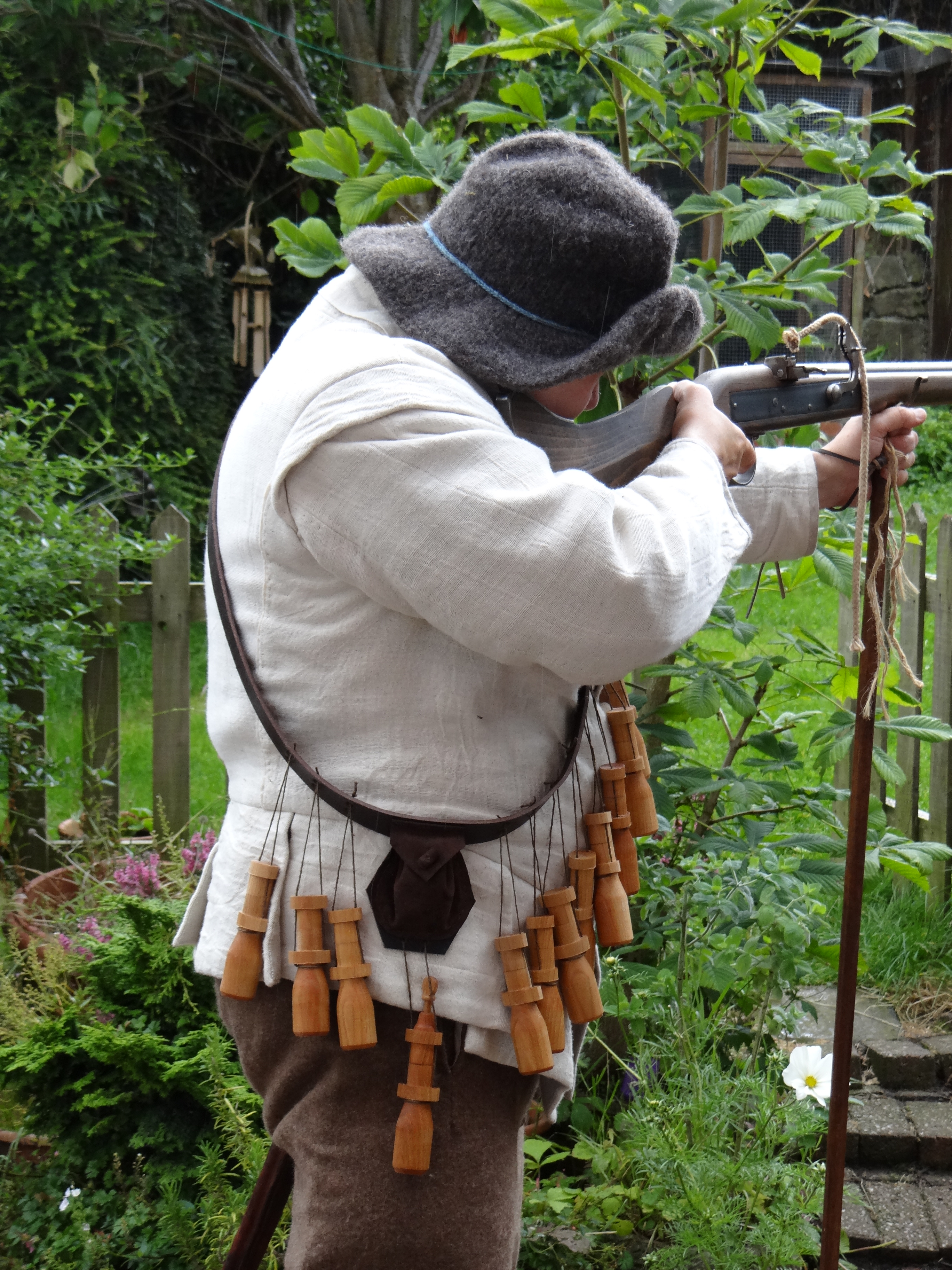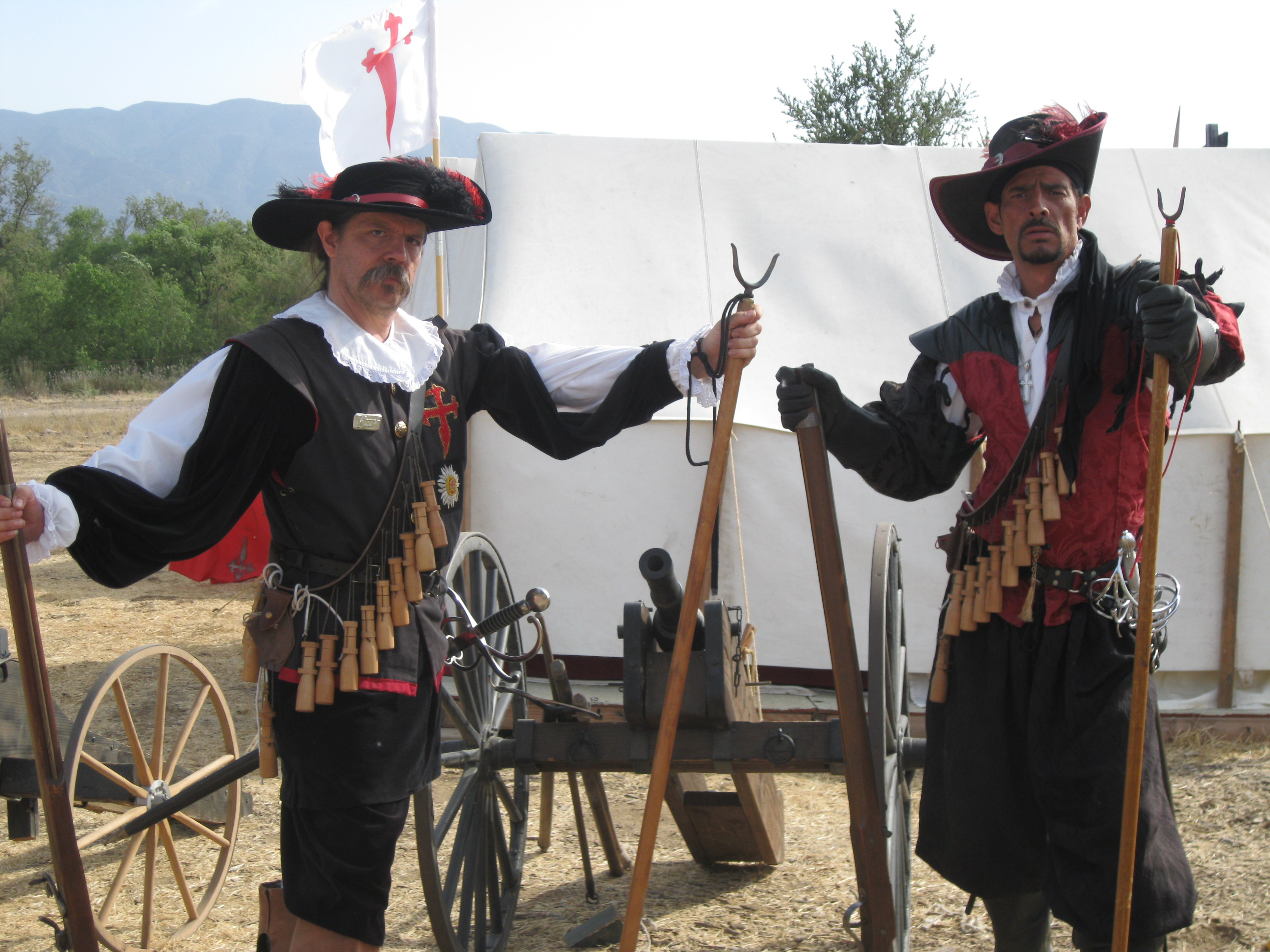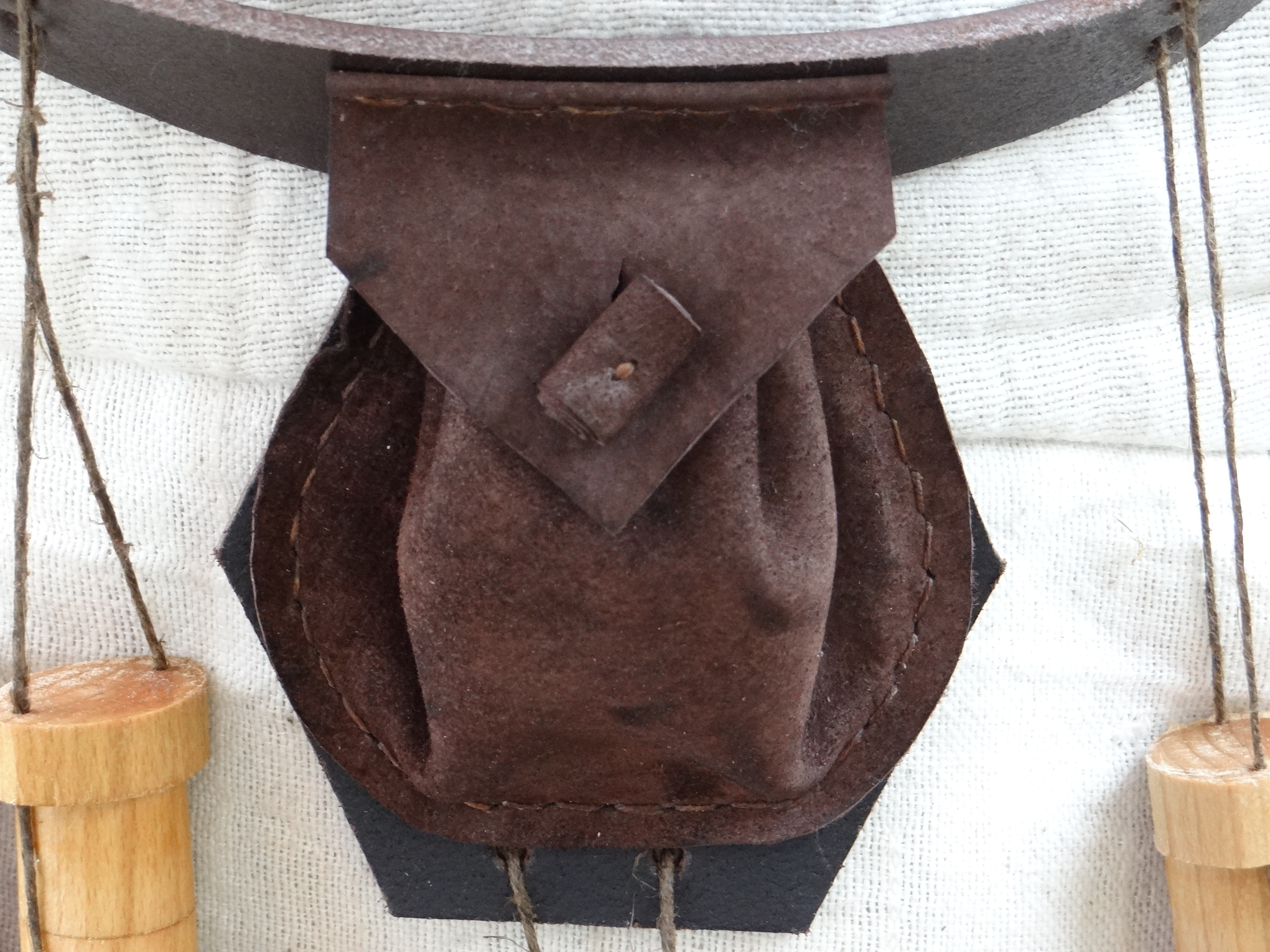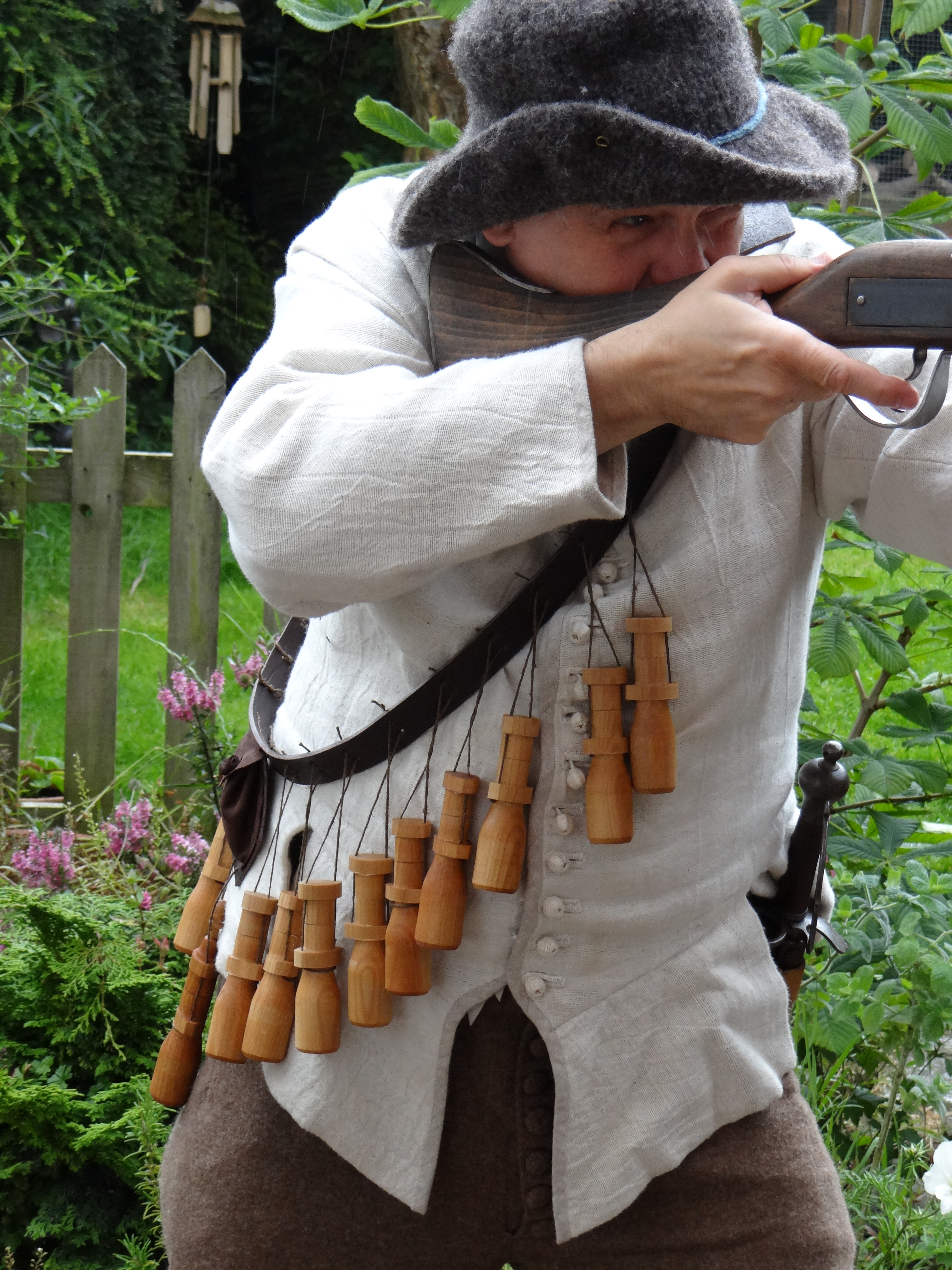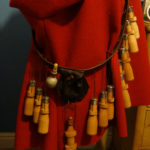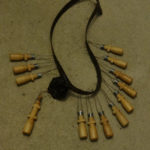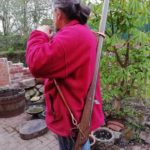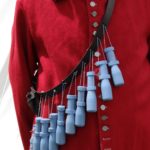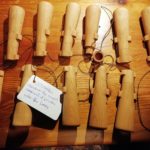Description
These Seventeenth century powder boxes (Called ‘charges’ in the C17th) and a primer bottle (referred to in military manuals just before the war as ‘touch box’) are displayed on a bandolier (often known in the period as a ‘collar of charges’ with a bullet bag. All the boxes are turned on a period treadle lathe and the leather is all hand sewn. They are copies of those contained at the Royal Armouries collection which is now held in Leeds in Yorkshire, UK. I have video footage of my visits to the collection when I took the measurements: find the playlist here . There are several types in the vaults (not on public display) and I can reproduce any of them faithfully. These powder boxes hold around nine drams of black powder because they have been ‘turned’ as specified during the English Civil War, and not simply bored, so that the capacity is greatly increased. The Discovery Channel’s weapons expert bought some from me in 2011 and he is considering using them in a programme because they demonstrate the increased capacity required for the more ‘claggy’ C17th powder, used before improved C18th refining methods.
I can make to order. The touch box is the size of the original, with the little ‘nipple’ styling on the lid and comes with a ‘stopper’, again as seen at the Leeds Armouries. The belts were around 51″ and, like a strap, not sewn to a ‘V’. You will notice the holes are punched in pairs which keeps the strings close together, which I think might reduce the strain on the outer edge of the lids where the guide holes are. The bullet pouch has a flap through which a leather toggle protrudes. There were many types of bullet bags used but the most common one is shown in the close up and that is the one; that is the type I send out with this belt. I stuff some paper in the pouch to make it look as though it contains bullets. The primers had replaced the outmoded flasks by the time of the English Civil War and authenticity conscious re-enactors should be able to use them on the battlefield as the ‘stopper’ will prevent stray sparks from reaching the contents. I am willing to turn to specifications and with different types of wood, but the price may well need to be adjusted for this.
Leather is the highest quality I can get from the local tannery but it may vary slightly from that in the picture. All the bandoliers I have examined have been dark brown and not the Vegetable tanned coulour of period buff coats and baldricks.
I have a Facebook page I hope musketeers around the world will use to say where they will be Going BANG around the world.
I finish these beech wood boxes in accordance with the specification of the day and I can provide painted ones also, for those who wish to depict the New Model Army. ‘Bandoliers to bee of wood with whole bottomes to bee turned within and not boared, ye heads to be of wood & to be laid in Oyle, (vist) three times on & to be coloured blow & white strings with strong thread twist & with good Belts at XXd. Peece…’. Order for 1,500 to the bandolier makers Thomas Bostock, Henry Thrall and Richard Rumsey in June 1646. PRO 30/37.. The stopper is tapered so that it jams in to the hole and is attached to the cord for security. The shoulder rest is a direct copy of one in the Tower of London collection as is the rest of the bandolier. You can see the originals in the You Tube link I have given above; they are faithful reproductions. Please remember this set will accommodate much larger amounts of powder than needed on a re-enactment battlefield so care should be taken when filling them.
I have referred to ‘apostles’ in the title because they are often referred to as such. It is not a term I can find in the period and appears to date back to a C19th historian whose foot note was taken for a direct quote from the C17th. Though these belts are made to the original size, I can make them longer if required; a good measure is that the collar of charges should fit easily between the hand and elbow of one arm so it can be put on with that arm; the bullet bag should be at elbow height, to conform with contemporary engravings.
I’m currently making these. I do not ‘dip’ them until an order is received and the dipping process takes three days.
You can see me making bandolier boxes at some shows and Sealed Knot musters around the UK. I make them on my C17 reproduction lathe which has been built to Joseph Moxon’s specifications. You can see my YT videos of the lathe at the Master Webbe channel.
Taken from Period engravings, the oil bottle adds real character to the bandolier. The bottle is hand made and hollowed for lightness and to increase internal capacity. I have only ever seen one real one in an Austrian museum but it has not yet been accurately dated so far as I know. That one is brass but mine, like the powder boxes, is made from English Beech.
WARNING It is the responsibility of the user to check the charge your musket is proofed for when using these bandoliers.
Instruction. Measure the correct amount of powder in to the boxes.
Guarantee.
Wood can sometimes be unpredictable. If you have a natural breakage or crack within the first year of use, re-enacting can sometimes take its toll, simply send me a picture of the damaged item and I will replace it free of charge
